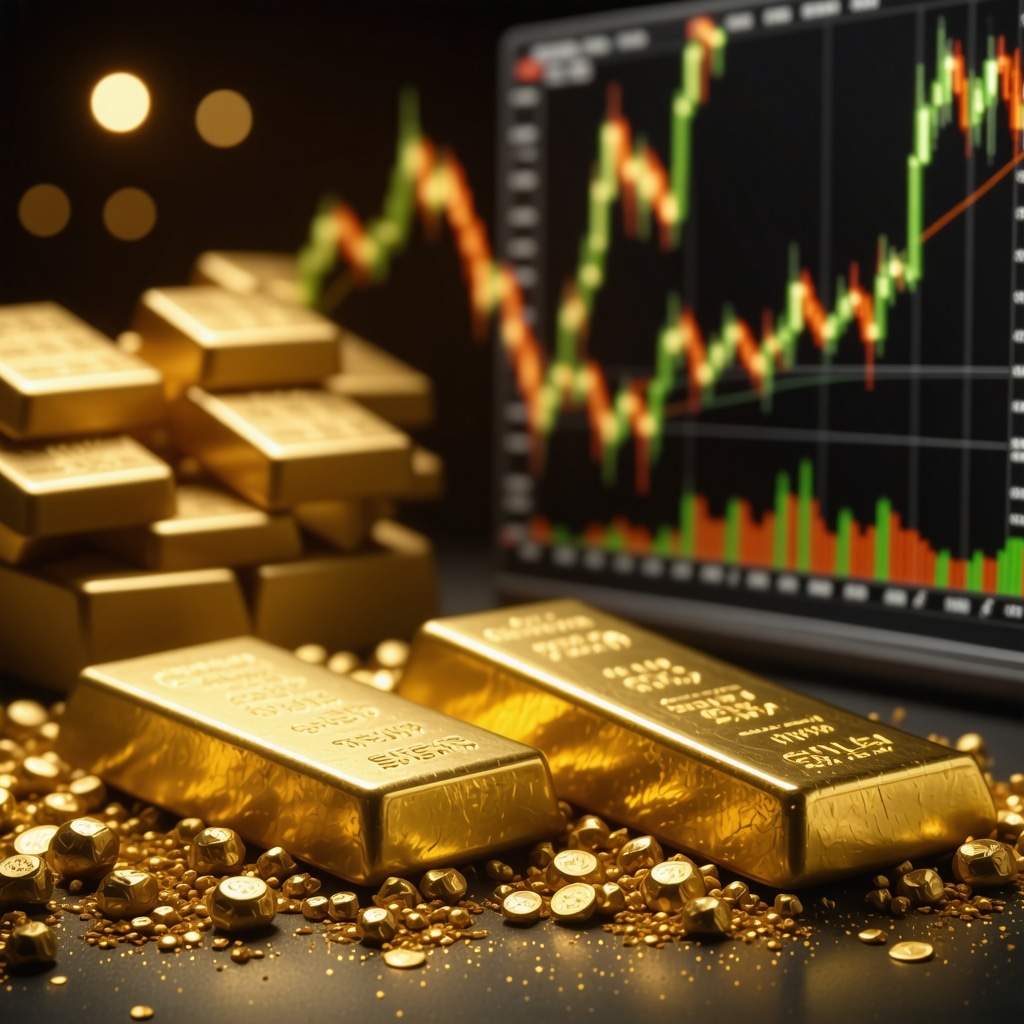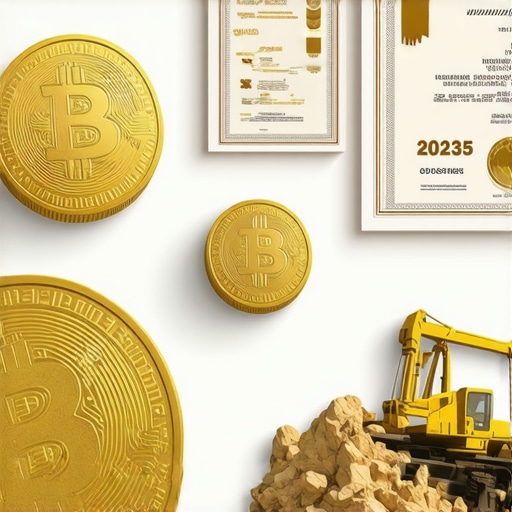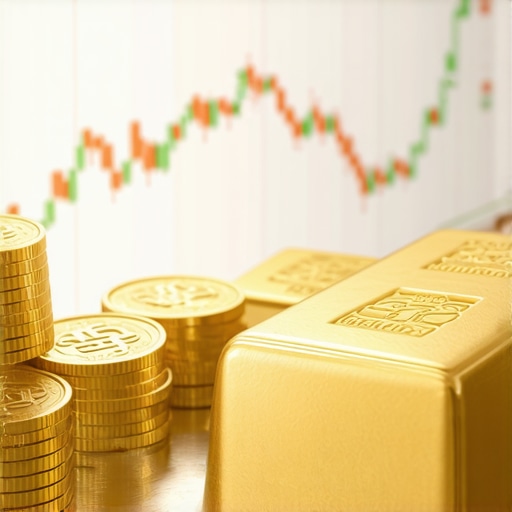How I Discovered the Diverse World of Gold Investments
When I first dipped my toes into gold investing, I assumed it was as simple as buying a few gold bars and waiting for their value to rise. But as I navigated the market, I quickly realized there’s a rich variety of ways to invest in gold, each with its own nuances and potential rewards. From physical bullion to exchange-traded funds (ETFs) and mining stocks, the landscape is both exciting and complex.
Why I Found Gold ETFs an Accessible Starting Point
Early on, I was hesitant about handling physical gold due to concerns about storage and authenticity. That’s when I turned to gold ETFs. These funds allowed me to invest in gold without the hassle of physical possession, offering liquidity and ease of trading. I remember researching top gold ETFs to watch in 2025, which gave me confidence in selecting funds that track gold prices closely and have strong management.
What Makes Bullion a Tangible Hedge That I Trust?
Despite the convenience of ETFs, I eventually ventured into physical bullion – gold bars and coins – because there’s something reassuring about holding a tangible asset. I learned that choosing between bars and coins depends on factors like liquidity, premiums, and personal preference. My favorite resource for safely buying physical gold is the step-by-step guide to buying gold bars safely. It helped me avoid common pitfalls and verify authenticity, which is crucial in protecting my investment.
Handling bullion also taught me about secure storage options, like safety deposit boxes and home safes, which add a layer of trustworthiness to owning physical gold.
How Mining Stocks Added Excitement and Risks to My Portfolio
To diversify further, I started exploring gold mining stocks. Investing in mining companies felt more dynamic since their stock prices often respond not only to gold prices but also to operational performance and geopolitical factors. This higher volatility meant greater risk but also the chance for higher returns. I found insightful analysis on gold mining stocks risks and rewards which deepened my understanding before committing funds.
How Do You Decide Which Gold Investment Fits Your Style?
This question often crosses my mind and I’m curious about your experience. Do you prefer the tangible security of bullion, the convenience of ETFs, or the growth potential of mining stocks? For me, a balanced approach combining these options has worked well, aligning with my risk tolerance and investment goals.
If you’re interested in exploring these options further, I invite you to share your own stories or questions in the comments below. Learning from each other’s journeys enriches our collective understanding.
For those eager to deepen their knowledge, the Investopedia guide on gold investing is a reliable source that helped clarify many concepts for me.
Exploring the Impact of Macroeconomic Factors on Gold Prices
Understanding the influence of macroeconomic variables has been crucial in refining my gold investment strategy. Inflation rates, interest rates, and currency fluctuations profoundly affect gold’s appeal as a safe haven. For instance, rising inflation often drives investors towards gold, seeking to preserve purchasing power. Conversely, higher interest rates can dampen gold demand, as fixed-income assets become more attractive. These dynamics require constant monitoring to anticipate market movements effectively.
Central banks’ policies also play a pivotal role. Their gold purchase and reserve strategies can sway market sentiment and price trends. I’ve found resources like analyzing central bank gold purchases invaluable for grasping these complex relationships.
Leveraging Technology and Data Analytics in Gold Trading
As gold markets grow more sophisticated, incorporating technology has enhanced my trading precision. Advanced data analytics, algorithmic trading, and real-time market sentiment analysis empower investors to make informed decisions swiftly. Utilizing platforms that offer comprehensive charts and predictive models has become part of my routine, helping to identify entry and exit points with greater confidence.
Moreover, understanding the nuances of market volatility through technical indicators has been instrumental. Tools like the Relative Strength Index (RSI) and Moving Averages assist in gauging momentum and potential reversals, which are especially useful in the often unpredictable gold market.
How Can Investors Balance Risk and Reward When Diversifying Gold Portfolios?
Balancing risk and reward remains a central challenge in gold investing. Diversification across physical gold, ETFs, and mining stocks can mitigate risks but requires careful consideration of each asset’s characteristics. Physical gold offers stability and intrinsic value, ETFs provide liquidity and ease of trading, while mining stocks introduce growth potential coupled with operational risks.
To optimize this balance, I recommend assessing your investment horizon, risk tolerance, and market outlook. For example, a conservative investor might lean heavily towards bullion and ETFs, whereas a more aggressive investor could allocate a higher percentage to mining stocks.
Expert analysis from Investopedia reinforces the importance of tailored portfolio construction and ongoing risk assessment.
Practical Tips for Securing and Authenticating Physical Gold
Owning physical gold introduces unique considerations such as secure storage and authenticity verification. I’ve learned to prioritize reputable dealers and use third-party certification services to avoid counterfeit risks. Incorporating tamper-evident packaging and obtaining assay certificates has become standard practice for me.
Additionally, secure storage options like bank safety deposit boxes or insured private vaults provide peace of mind against theft or loss. For those interested, the physical gold investment tips for safeguarding assets offer detailed guidance on this front.
Integrating Gold Investments into a Broader Financial Strategy
Gold should not exist in isolation but as part of a diversified financial plan. Considering how gold complements other asset classes, such as stocks and bonds, helps in building a resilient portfolio. Its low correlation with equities makes it an effective hedge during market downturns.
Regularly reviewing portfolio allocation in response to economic shifts ensures alignment with financial goals. I’ve found that periodic rebalancing, guided by market insights, maintains the intended risk-reward profile.
For those looking to deepen their strategic approach, exploring how to use gold as a hedge to protect your portfolio can provide valuable frameworks.
If you found these insights helpful, please share your thoughts or questions in the comments below. Engaging in discussions helps us all refine our investment approaches and stay adaptive in evolving markets.
Reflections on the Emotional Nuances of Holding Physical Gold
There’s an intangible aspect to owning physical gold that goes beyond its market value. I often find myself reflecting on the sense of security and permanence it brings, especially during turbulent economic times. Unlike digital assets or stocks, which can feel abstract, the weight and gleam of a gold coin or bar connect me to a history of wealth preservation that spans centuries. This emotional reassurance plays a subtle but significant role in how I balance my portfolio.
However, this connection also requires a mindful approach. The responsibility of safeguarding physical gold—whether through a home safe or a bank deposit box—adds layers of complexity and cost that I’ve learned to factor into my overall investment calculus. Yet, these efforts feel worthwhile when contrasted with the peace of mind that comes with tangible ownership.
How Do Market Sentiment and Geopolitical Events Shape My Gold Decisions?
Gold’s allure as a safe haven is deeply intertwined with global uncertainties, and my investment choices often reflect this dynamic. For example, during periods of geopolitical tension or unexpected economic shocks, I notice a swift uptick in gold prices that validates its role as a crisis hedge. Tracking these events with a nuanced eye helps me time my moves more strategically.
A resource I frequently consult to contextualize these influences is the gold market analysis revealing key trends shaping prices for 2025. It offers insights that bridge macroeconomic data with real-world developments, which sharpens my market intuition.
Can Advanced Analytical Tools Truly Transform Gold Trading Outcomes?
This question has occupied much of my recent thinking. While traditional indicators like Moving Averages and RSI provide foundational guidance, integrating advanced analytics—such as sentiment analysis derived from news feeds and social media—has added a new dimension to my strategy. These tools can detect shifts in investor mood before they materialize in price changes, granting a valuable edge.
However, I’ve also learned that relying solely on algorithms without human judgment risks overlooking nuanced market signals. The art lies in blending data-driven insights with experience and a clear understanding of gold’s unique market drivers. For investors intrigued by this approach, exploring advanced gold trading techniques can provide a solid framework to build upon.
Integrating Gold Within My Broader Wealth Philosophy
Ultimately, gold investing is not just about chasing returns but about weaving a resilient financial narrative that withstands time and uncertainty. For me, this means periodically revisiting my allocations and questioning how each gold investment aligns with my evolving goals and risk appetite.
I encourage readers to view gold not as a standalone asset but as a dynamic component of a holistic strategy. Whether it’s through physical bullion, ETFs, or mining stocks, each avenue offers distinct advantages and challenges that can complement other investments.
Have you found that shifting market conditions push you towards one form of gold investment over another? Or do you maintain a steady balance despite volatility? Share your experiences or questions below—our collective wisdom enriches every journey.
Navigating the Complexities of Gold Supply Chains and Their Market Implications
Delving deeper into gold investing, I discovered that understanding the intricacies of gold supply chains significantly sharpens one’s market perspective. From extraction and refining to distribution and retail, each stage carries distinct risks that ripple through pricing and availability. For instance, geopolitical tensions or labor disruptions in key mining regions can constrict supply, often triggering price spikes beyond pure market speculation.
Another subtle, yet impactful factor is the role of recycling in gold supply dynamics. Recycled gold, sourced from jewelry, electronics, or industrial waste, contributes a meaningful percentage to global supply. Fluctuations in recycling rates, influenced by economic conditions and scrap gold prices, create nuanced supply-side effects that astute investors must monitor.
Resources like Understanding Gold Supply and Demand: Market Impact Explained provided me with comprehensive insights into these supply chain complexities, enabling me to anticipate shifts that might otherwise go unnoticed.
How Do Emerging Technologies and ESG Trends Influence Gold Mining Investments?
One of my recent explorations has been the intersection of gold mining investments with emerging technologies and the growing emphasis on environmental, social, and governance (ESG) criteria. Mining companies are increasingly adopting automation, AI-driven exploration, and sustainable extraction techniques that not only optimize operations but also reduce environmental footprints.
This shift towards ESG-compliant mining operations has caught my attention because it directly affects company valuations and investor sentiment. Firms with strong ESG policies often enjoy better access to capital and face fewer regulatory hurdles, rendering their stocks potentially less volatile and more attractive in the long term.
However, evaluating ESG factors demands a keen eye and reliable data sources. I rely on detailed ESG reports and industry analyses to discern which companies genuinely prioritize sustainability versus those engaging in “greenwashing.” This nuanced understanding shapes my portfolio allocation to gold mining stocks, balancing growth potential with ethical considerations.
Harnessing Seasonal Patterns and Macro Trends for Tactical Gold Trading
Beyond fundamentals, I’ve found that seasonal trends and macroeconomic cycles offer valuable tactical signals for timing gold trades. Historical data reveal recurring patterns—for example, increased gold demand during certain festivals or geopolitical anniversaries—which can subtly influence price momentum.
Coupling these cyclical insights with macroeconomic indicators like inflation expectations, real interest rates, and currency strength has enhanced my ability to anticipate market inflections. Such an approach is dynamic, requiring constant recalibration, but the payoff lies in more informed entry and exit decisions.
For readers keen on this dimension, exploring gold market analysis revealing key trends shaping prices for 2025 can provide a detailed foundation to build tactical strategies around prevailing market rhythms.
What Advanced Risk Management Techniques Can Refine Gold Portfolio Stability?
Risk management, especially in volatile markets like gold, transcends simple diversification. I’ve integrated advanced techniques such as dynamic hedging, options strategies, and scenario analysis to protect capital and enhance returns. Employing gold futures and options allows me to hedge against downside risk while maintaining upside exposure, a balance crucial for sophisticated portfolios.
Additionally, stress testing portfolios under various economic scenarios, including stagflation or geopolitical crises, has refined my preparedness for adverse conditions. These practices demand access to robust analytical tools and a thorough understanding of derivative instruments.
For those aspiring to elevate their risk frameworks, resources like advanced gold trading techniques offer valuable guidance on executing these strategies effectively.
Inviting You to Share Your Journey and Insights on Gold Investing
Reflecting on these layers of gold investment—from supply chain complexities to ESG considerations and advanced risk management—underscores how multifaceted this asset class truly is. I’m eager to hear how fellow investors navigate these challenges and opportunities.
Have you integrated sustainable mining criteria into your portfolio decisions? Or do you rely more on macroeconomic and seasonal signals for timing your trades? Sharing your experiences or posing questions in the comments will enrich this community’s collective expertise and empower us all to make smarter, more nuanced gold investments.
Let’s continue this journey together, learning and adapting to the evolving landscape of gold markets.
Things I Wish I Knew Earlier (or You Might Find Surprising)
Gold’s Emotional Value Is Just as Real as Its Market Price
When I began investing, I underestimated how much owning physical gold would affect my peace of mind. Holding a tangible asset like a gold coin or bar isn’t just about numbers — it’s about the comfort of having a lasting store of value during uncertain times. This emotional aspect often guided my decisions more than I expected, reminding me that gold’s worth goes beyond charts and forecasts.
Not All Gold Is Created Equal — Authenticity Matters More Than You Think
Early mistakes taught me the hard way that buying gold without verifying its authenticity can lead to costly regrets. I now always rely on trusted dealers and insist on third-party certification. Resources like the step-by-step guide to buying gold bars safely helped me understand how to protect myself from fakes and scams, which was a game changer.
Gold ETFs Are a Great Launchpad — But They Don’t Replace Physical Gold
I started with gold ETFs because they’re easy and liquid, but I quickly realized that they can’t fully replicate the reassurance that physical gold provides. ETFs also come with management fees and depend on third-party structures. Balancing ETFs with bullion investments gave me a more rounded portfolio that suited both convenience and security.
Mining Stocks Bring Excitement — Alongside Complexity and Volatility
Diving into gold mining stocks added a thrilling layer to my portfolio but also introduced new risks that aren’t always obvious to beginners. These stocks react to operational performance and geopolitical factors, not just gold prices. Before investing, I found it essential to study analysis like the risks and rewards of gold mining stocks to avoid surprises.
Seasonal and Macro Trends Can Be Powerful Trade Signals
At first, I overlooked how much seasonal demand and macroeconomic cycles influence gold prices. Recognizing patterns linked to festivals or inflation expectations helped me time entries and exits more effectively. Exploring key trends shaping prices for 2025 opened my eyes to these subtleties.
ESG Factors Are Changing the Gold Mining Landscape
I didn’t anticipate how environmental and social governance considerations would affect mining investments. Companies embracing sustainable mining practices tend to have better long-term prospects and investor appeal. Learning to distinguish genuine ESG efforts from greenwashing became a crucial skill for me when choosing mining stocks.
Resources I’ve Come to Trust Over Time
Investopedia’s Guide on Gold Investing – This was my go-to for foundational knowledge. It breaks down complex concepts into digestible insights that helped me start on solid ground.
Buying Gold Bars Safely: Ultimate Physical Investment Guide (https://buyingoldnow.com/how-to-buy-gold-bars-safely-ultimate-physical-investment-guide) – A must-read for anyone considering physical gold, it offers practical steps and tips I still rely on.
Gold Market Analysis: Trends Shaping Prices for 2025 (https://buyingoldnow.com/gold-market-analysis-trends-shaping-prices-for-2025-investors) – This resource sharpened my understanding of how macroeconomic and geopolitical factors influence gold’s price movements.
Advanced Gold Trading Techniques to Maximize Your Gains (https://buyingoldnow.com/advanced-gold-trading-techniques-to-maximize-your-gains) – Once I was ready to move beyond basics, this guide helped me integrate data analytics and risk management into my trading.
Step-by-Step Guide to Buying Gold Bars Safely in 2025 (https://buyingoldnow.com/step-by-step-guide-to-buying-gold-bars-safely-in-2025) – This detailed walk-through is invaluable for new and seasoned investors alike to avoid common pitfalls when acquiring physical gold.
Parting Thoughts from My Perspective
Gold investing has been a journey filled with both tangible lessons and intangible reflections. From the comforting heft of a gold bar in my hand to the calculated moves in ETFs and mining stocks, each form of gold investment has taught me something unique about value, risk, and patience.
What stands out most to me is how gold transcends being just a commodity. It’s a bridge between historical legacy and modern financial strategy, offering stability in volatile times while inviting thoughtful engagement with markets and technology.
If this resonated with you, I’d love to hear your thoughts or experiences with gold investing. Whether you’re drawn to physical bullion’s tangible security or the dynamic potential of mining stocks, sharing our stories can enrich our understanding and help us all navigate the evolving landscape of gold markets.
Feel free to drop your insights or questions in the comments — let’s keep the conversation going!










